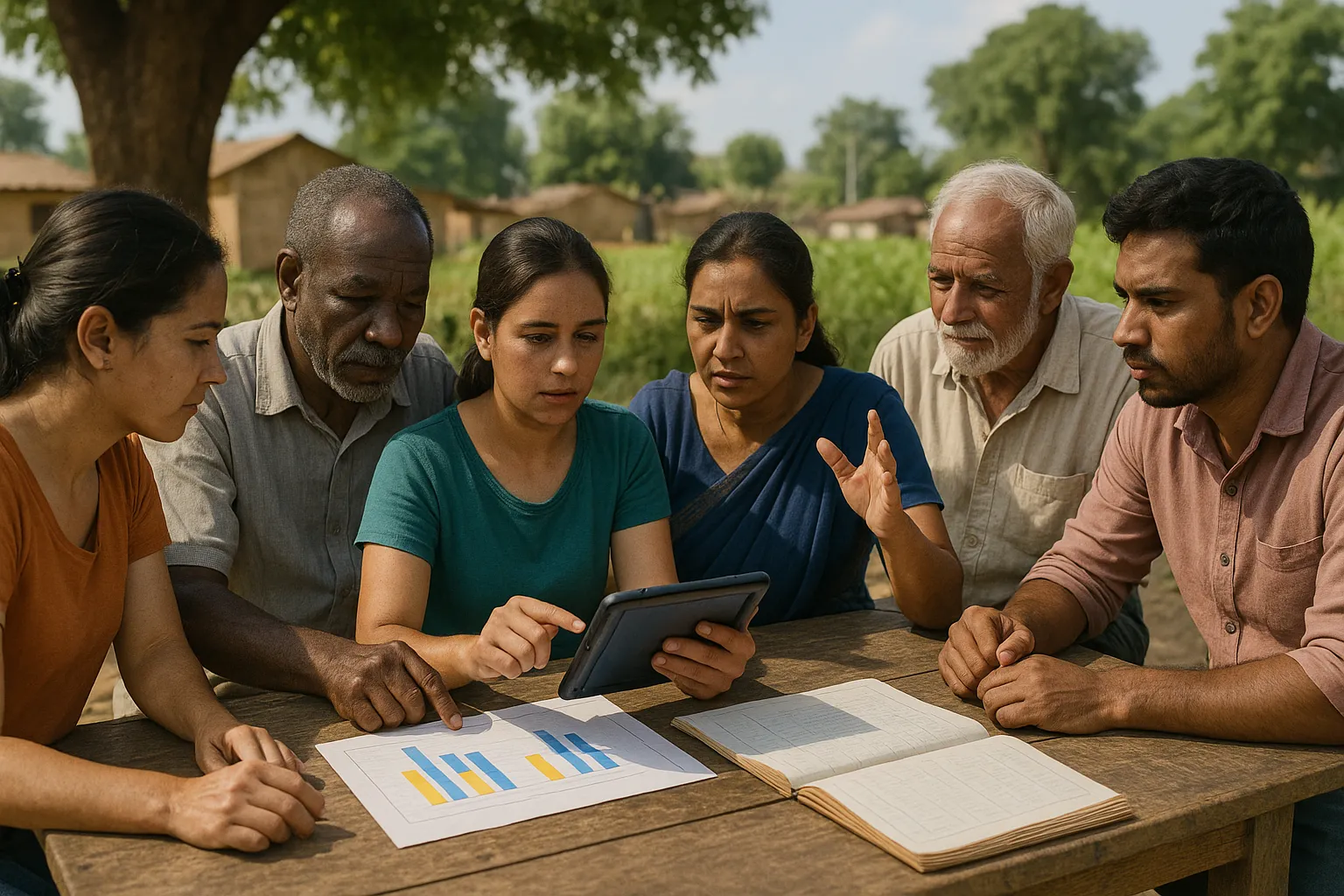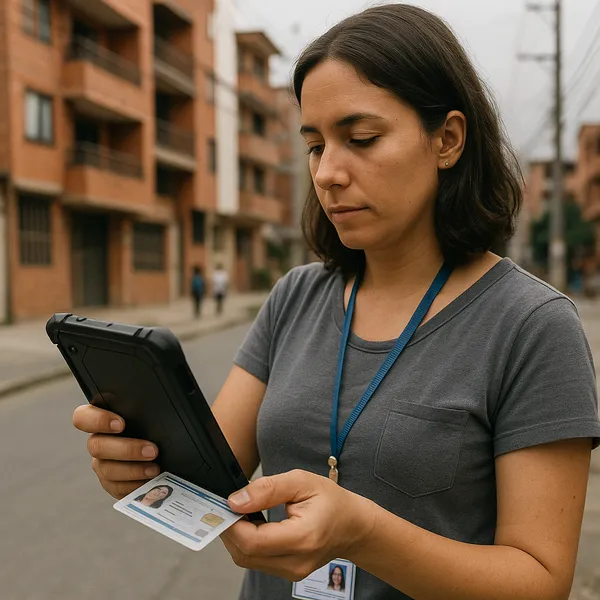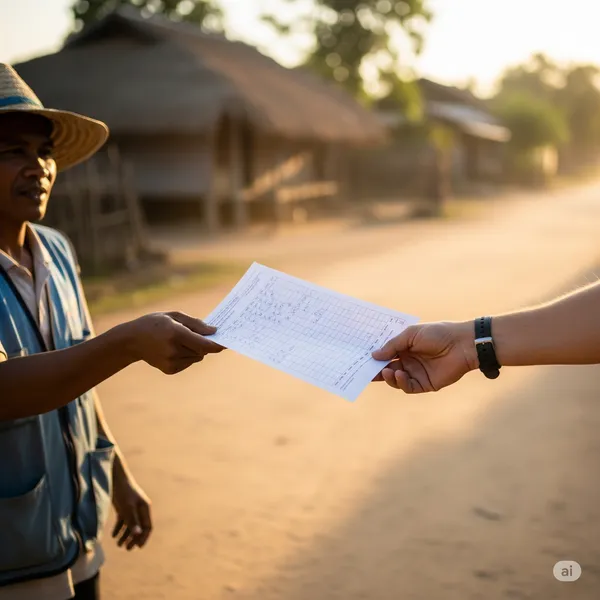The Rise of Citizen-Led Monitoring
Published on: Sun Jun 01 2025 by Ivar Strand
From Passive Recipients to Active Participants: The Rise of Citizen-Led Monitoring
Traditional models of project monitoring in development and governance often rely on a top-down, centralized approach. While necessary for fiduciary oversight, these methods frequently fall short. They can be slow, miss critical local context, and inadvertently position community members as passive recipients of aid rather than as active stakeholders in their own development.
A more effective and sustainable approach is gaining traction: Citizen-Led Monitoring (CLM). This is about formally integrating community members into the process of tracking project inputs, activities, and outcomes. In this paper, we discuss the rationale behind this shift and outline a pragmatic framework for its implementation.
The Inherent Gaps in Top-Down Oversight
Conventional monitoring, conducted by central government agencies or external evaluators, faces several structural limitations:
- Information Asymmetry: Central auditors and project managers often lack granular, real-time information about what is actually happening on the ground. They may see that a school was built, but not that the roof leaks or that the contracted teacher is consistently absent.
- Data Latency: By the time field data is collected, compiled, sent to a central office, and analyzed, the findings are often outdated. This time lag prevents timely corrective action, allowing small problems to become significant failures.
- Weak Local Ownership: When monitoring is perceived as an external activity, communities have little incentive to engage with it. The project remains something being done to them, not with them, undermining long-term sustainability.
The Rationale for Community-Based Monitoring
Engaging citizens directly addresses these gaps. The fundamental idea is to shorten the feedback loop between service delivery and accountability. At Abyrint, we have found the benefits to be clear and codifiable.
- Improved Data Quality and Relevance: Citizens are the ultimate end-users of public services and development projects. They can provide immediate, contextualized feedback on issues that external monitors would likely miss. This ground-truth data is an invaluable supplement to formal reporting.
- Enhanced Social Accountability: CLM creates a direct channel for citizens to voice concerns and report issues. When linked to a functional Grievance Redress Mechanism (GRM), this empowers communities to hold service providers and local authorities accountable, moving from complaint to resolution.
- Increased Project Sustainability: When community members are actively involved in monitoring a project, their sense of ownership increases. They become invested in its success, which is a critical factor for ensuring that project benefits are maintained long after external funding has ceased.
A Framework for Implementing Citizen-Led Monitoring
Successfully implementing a CLM system requires more than simply distributing surveys. It demands a structured approach that empowers citizens while ensuring the data they generate is actionable.
- Step 1. Define a Focused Scope and Simple Indicators. The key challenge is not to overwhelm citizen monitors. The scope must be narrow and the indicators clear. Instead of asking citizens to audit complex financial statements, ask them to verify simple, observable facts: Did the medical supplies arrive at the clinic this month? Is the new water pump functional?
- Step 2. Co-Design the Monitoring Tools. The tools for data collection should be developed with the community, not for them. They can range from simple paper-based checklists and community scorecards to SMS or app-based reporting systems. The choice of tool must be appropriate for the local context, cognisant of literacy and technology access.
- Step 3. Establish a Clear and Responsive Feedback Loop. This is the most critical step. Collected data is of little use if it is not analyzed and acted upon. A well-defined GRM must be in place to receive, triage, and respond to citizen reports. Stakeholders—from the project implementation unit to local government—must be committed to using this feedback to inform decisions.
- Step 4. Build Capacity and Ensure Participant Safety. Citizen monitors require training not only on how to use the tools but also on their rights and responsibilities. Furthermore, the operating environment is not always benign. Mechanisms must be established to protect participants from potential repercussions for reporting on powerful interests.
Exhibit A: Integrating Citizen Feedback with Formal Systems
Citizen-led monitoring does not replace formal oversight; it complements it. The data generated by citizens provides a high-frequency, qualitative check on the quantitative data flowing through official channels. Exhibit A illustrates a conceptual model for this integration.
The process begins with citizen monitors reporting observations via accessible channels. This data flows into a central GRM platform where it is aggregated and analyzed. Actionable insights are then channeled to the relevant bodies—a project management unit for operational issues, or a public financial management (PFM) authority for fiduciary concerns. Crucially, the loop is closed by communicating back to the community what actions were taken based on their input. This reinforces trust and incentivizes continued participation.
A Shift in Agency
The move toward citizen-led monitoring is more than a technical adjustment to project management. It represents a fundamental shift in agency. It reframes the role of citizens from passive beneficiaries of external interventions to active participants in holding power to account. For organizations committed to improving governance and achieving sustainable development outcomes, building systems that facilitate this shift is not just an option; it is a necessity.



